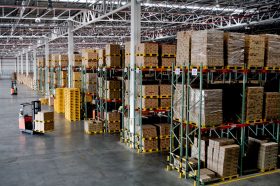Resources - Blog
Does Automation Kill Jobs?

Stay on top of the latest e-commerce and marketplace trends.
There’s been a lot of talk recently about how automation leads to the shrinking of available jobs. It seems that robots are taking the place of human beings everywhere, and Amazon is a major example of this phenomenon. Amazon Go, the checkout-less, line-less grocery store, is rendering cashiers obsolete. There are 45,000 robots currently “working” at Amazon’s fulfillment centers. And automated drone delivery straight to consumers’ doorsteps (Amazon Prime Air) will be a reality in the not-too-distant future.
However, while automation is killing some jobs, it’s creating others. Amazon grew its fleet of robots by 50% in 2016, while increasing human employment that year by roughly the same percentage. According to Amazon’s Q4 2016 earnings report, Amazon intends to create more than 100,000 full-time jobs this year. This suggests that increasing reliance on robots and employment opportunities aren’t mutually exclusive. In fact, they frequently complement each other — both at Amazon and beyond.
That’s because automation is incorporated for tasks that could be more easily and effectively accomplished by a robot than a person. For example, the robots brought onto Amazon’s warehouses? They do the heavy lifting and transportation of boxes — a physically demanding task that puts workers at risk of injury. Meanwhile, workers take care of tasks that require fine motor skills and thinking. You could argue that automating these jobs leaves companies open to hiring and training workers for more skilled labor that will ultimately help the business grow in innovative directions. For instance, Amazon’s Career Choice program covers 95% of the tuition for its associates to get training, certification, and degrees for in-demand roles both in and out of Amazon.
As an Amazon third-party seller, you also have the opportunity to automate jobs that would be better accomplished by robots. As demands on your business increase, one of the first things you can do is automate your repricing strategy. Using a plug-and-play solution like Feedvisor’s Amazon repricer allows you to set floor and ceiling prices for your products. Unlike manual repricing, which swallows up valuable time (not to mention is detrimental in terms of maximizing profit), automatic repricing saves time while increasing the accuracy of pricing decisions. In order to keep up with Amazon’s pace of updating prices at least every 15 minutes, you would need someone to dedicate most of his or her time to this arduous task. There’s no need for that when you have a real-time repricer getting you the ideal Buy Box share at the ideal price.
Once you have your repricing software in place, it’s time to think about how you can use your newfound free time to take your business to the next level. Want to invest more in sourcing new and interesting products? How about auditing Amazon to make sure it doesn’t owe you money? Planning your long-term business goals and strategy? These higher-level activities require skilled workers, and can’t simply be automated. And that’s exactly what your team should be doing.




